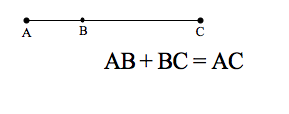

Then, you just take the average, so it is the same as this formula on the number line- 0235

You are given two points, and you have to find the midpoint. So, they are just saying, "OK, well, then, if this is (x,y) and this is (x,y)." we are just saying that that is the first (x,y) and these are the second (x,y). 0208Īnd then, (x 2,y 2): it is the second point, because all points are (x,y). This right here, these numbers, 1.it is just saying that this is the first point. It is not (x 2,y 2), because that is very different. You are going to use this formula right here: remember from the last lesson: we also used (x 1,y 1) 0193Īnd (x 2,y 2) for the distance formula-remember that, for this one, 0200 So, to find the midpoint with the endpoints (x 1,y 1) and (x 2,y 2), 0184 You don't have just numbers a and b-you have points. Now, if you are trying to find the midpoint on a coordinate plane, then it is different, because you have points 0171 You add them up, and you divide by 2: so it is just 1 + 5, divided by 2, which is 6/2, and that is 3 so the midpoint is right here. That is the same.just think of it as average: whenever you try to find the midpoint on a number line, you are finding the average. Then I just add up the two numbers, and I divide it by 2. If I want to find the midpoint between 1 and 5-so then, this will be a, and this will be b- 0132 So, again, only on a number line: if I have a number line like this, say.this is 0 this is 1 2, 3, 4, 5 0116 On the number line, the coordinates of the midpoint of a segment whose endpoints have coordinates a and b is (a + b) divided by 2. 0093ĭepending on where we are trying to find the midpoint, you are going to use different formulas.

OK, some formulas: the first one: this is on a number line-that is very important. So then, if it is the midpoint, then this part will have half the measure of the whole thing. That is the definition of midpoint that means that, if PQ, let's say, is 20, and M is the midpoint of PQ, then PM is going to be 10 this is 10, and this is 10. I can write little marks like that to show that this segment right here, PM, and QM are the same. Then I can say that PM, this right here, is equal to MQ, because you are just cutting it in half exactly, so it is two equal parts. So, if I say that M, the is the point right in the middle of P and Q, so it is the "midpoint," the middle point-this is M. Midpoint M of PQ is the point right between P and Q, such that PM = MQ that means PM is equal to MQ. The definition of midpoint: this is very important, the definition of a midpoint. We are going to talk about more segments. This lesson is on midpoints and segment congruence. Section 8: Applying Right Triangles & Trigonometry Inequalities for Sides and Angles of a Triangle Section 3: Perpendicular & Parallel Lines Proofs in Algebra: Properties of Equality

The Segment Addition Postulate is similar to the angle addition postulate, but you are working with line segments instead of adjacent angles.Geometry Online Course Section 1: Tools of Geometry These cables placed at specific angles support the bridge’s structure by sharing the weight of the bridge evenly across its supports. Some bridges have cables connected to bridges at angles from the bridge floor to towers. The Howe truss is made up of two 60° triangles and the Fink truss is made with three 40° triangles. It is important the angles in each triangle are measured correctly, as roof trusses provide support for a roof. Roof trusses are beams of timber organized in triangles in the roofs of buildings. There are many applications of the postulate, especially in architecture and engineering. Now you know how the postulate works, you must know how it can be used in real life. Real-Life Application: Angle Addition Postulate You can find their resulting angle as the sum of 90° and 30° so ∠JKM is 120°. The angle ∠JKL is a right angle so it is 90°, and from the diagram, you will see LKM is 30°. Now you know how the postulate works, let’s work through an example and calculate the resulting angle.Īs you can see these angles share the same side KL, so they are adjacent. However- notice how the resulting angle changes? This is because it is the sum of the two adjacent angles. You will find that changing points A, D, or C will affect the resulting angle it makes, without affecting the adjacent angle. Here’s a fun tool to play around with and explore how changing the size of two adjacent angles affects the size of their resulting angle.


 0 kommentar(er)
0 kommentar(er)
